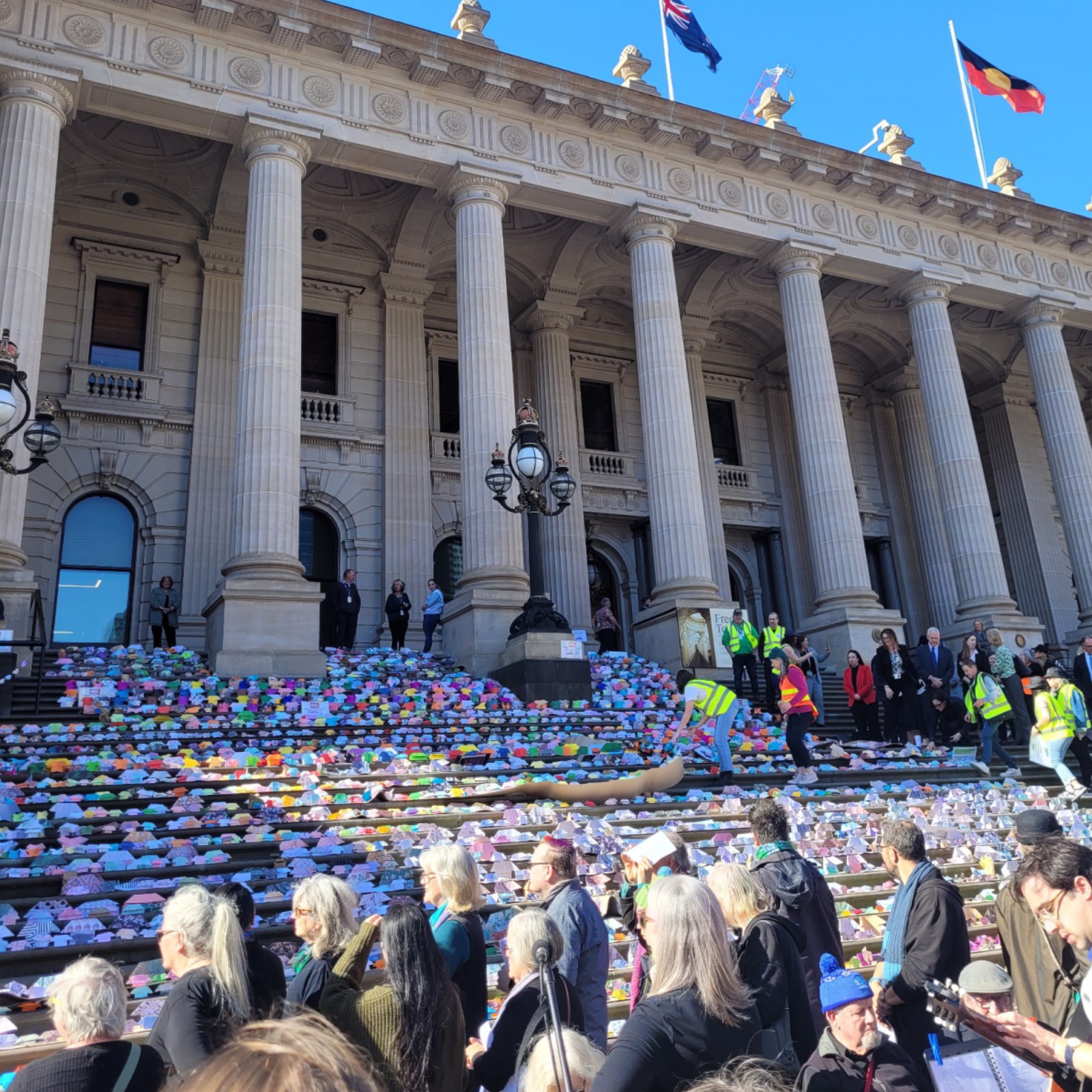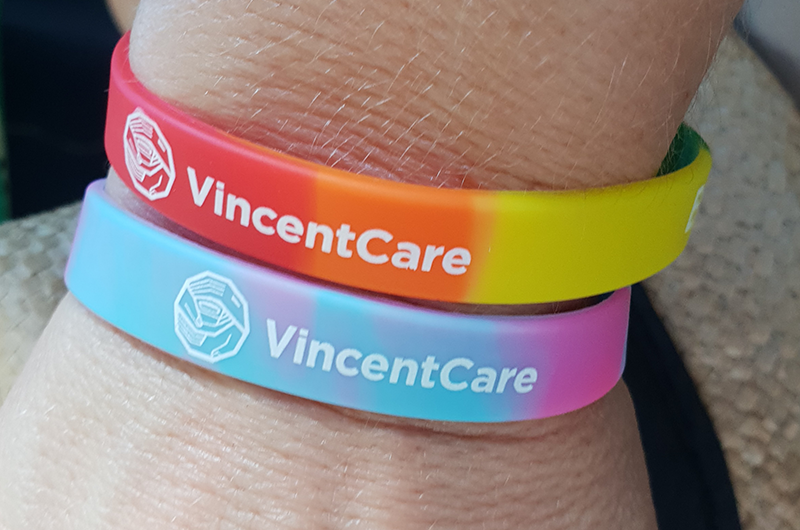
Diversity in action
Written by Josh Darvill, Manager - Support Services, VincentCare

VincentCare identified improving cultural competency as a key strategic priority within our Diversity Strategy. Organisational change was driven by Rainbow Tick accreditation and a Reflect Reconciliation Action Plan, which introduced high level inclusive practice frameworks for LGBTIQ, and Aboriginal and Torres Strait Islander communities. This required all levels of the organisation to view their practice through a critical lens, and reflect on how the status quo created barriers for people from diverse communities or minority groups. Integrating inclusive practice frameworks into core business offered challenges and opportunities that the organisation has grown from.
The support service context
VincentCare’s Northern Community Hub delivers homelessness and housing support services across north and west metropolitan Melbourne. Discrete programs are generally funded by government and in partnerships with other allied organisations. A total of 6,719 people made contact with the Hub in last financial year, and demand for services presently outstrips funded supply. Case management programs offered are generalist in nature, and seek to reduce the impact of homelessness and housing stress. Historically these programs have not specifically targeted diverse and minority cohorts, despite evidence that these groups disproportionately experience homelessness and other vulnerabilities. They are also significantly less likely to seek support from mainstream services (LGBTIQ Homelessness Research Project, Council to Homeless Persons 2017).
Integrating frameworks into practice
The Northern Community Hub has responded to community need by establishing three positions (Diversity Workers) that focus on providing a responsive and culturally safe service to people from Aboriginal and Torres Strait Islander backgrounds, or who identify as LGBTIQ. These positions focus on different age cohorts from young people to older adults, to tailor services effectively. The diversity model recognises that equity and equality are very different concepts in practice. While equality aims to promote fairness, it can only work if everyone starts from the same place and needs the same help – which we know is not the case for people experiencing homelessness. An equity approach may initially appear unfair, but it actively moves everyone closer to success by ‘levelling the playing field.’ Comparative to mainstream services, the Diversity Worker positions enable: more accessible locations; greater continuity of support; partnership development; prioritised case management; and advocacy to challenge systemic discrimination.
Client-accessible locations
By utilising a ‘place-based’ approach for staff contact with clients during assessment and induction, VincentCare can embed specialist roles in accessible and culturally safe spaces within the community. This means going to refuges, hostels, community health centres and other community locations where Aboriginal and Torres Strait Islander, and LGBTIQ clients feel a sense of familiarity and comfort.
Continuity of support
Client stewardship is provided by the same Diversity Worker from the point of assessment and induction through to ongoing case management and eventual case closure. This strengthens relationship building with clients, and fosters trust and rapport – improving communication and outcomes.
Networking and partnership development
A key component of the Diversity Worker’s role is capacity building with partner agencies, and service promotion. The LGBTIQ Diversity Workers chair a ‘Northern Rainbow Network’, which brings together housing/homelessness, mental health, and alcohol and drug services across the region. This network shares knowledge and expertise, highlights positive, culturally-competent practice, and promotes programs relevant to the client cohort. The Aboriginal and Torres Strait Islander Worker also participates in similar networks. This approach creates culturally relevant links and pathways for care.
Priority of access to case management
LGBTIQ and Aboriginal and Torres Strait Islander peoples are recognised as particularly vulnerable cohorts. As such, their access to case management is expedited, and they will not compete for access to supports with mainstream clients with different needs.
Challenging discrimination across the service system
Clients of the Diversity Workers often face overt and covert discrimination from organisations and services, including housing providers such as private real estate agents. Diversity Workers act as an advocate and dispel misconceptions about marginalised communities through education, capacity building and where required, through formal anti-discrimination mechanisms.
Sharing our learnings
Our Diversity Workers have expressed the following lessons learned, in supporting diverse clients:
- Always maintain curiosity and willingness to learn;
- There are no ‘wrong questions’;
- Seek out expert advice;
- Persistence and patience are key to overcoming any previous, negative experiences or perceptions of services, held by marginalised clients;
- Rapport building is central to engagement;
- Hold no assumptions – every situation and person is unique;
- Honesty and authenticity are vital for overcoming cynicism and reservations about accessing support; and
- Always maintain a sense of humour.
Feedback from clients suggests they have found this flexible approach reduces anxiety and assists with engagement. Without this service model, they would be far less likely to have accessed support.
Case study
Mohamed, a gay male, presented to VincentCare after spending the night sleeping on the steps of Centrelink. A Centrelink worker contacted the LGBTI Diversity Worker who attended the site that morning to initiate contact. The rapport and trust building was almost instantaneous. Mohamed advised that he had fled his family home because his parents and siblings could not accept his sexual orientation. Mohamed had been subjected to physical and emotional family violence, mainly from his father, for as long as he could remember. Mohamed noted he was from a CALD background and that his family had strong religious and cultural beliefs that he felt he did not fit into. Mohamed was referred and accepted into shared refuge accommodation. Recognising that this was potentially a risky environment for him, the LGBTI Diversity Worker checked in daily and provided some informal capacity building and secondary consultation to refuge staff. The Case Manager also actively coordinated with a Private Rental Access Program and found him housing with another couple from the LGBTI community. These are positive steps for Mohamed’s recovery toward a permanent exit from homelessness.
Originally published in the May 2019 edition of Parity, the national magazine for Council to Homeless Persons.



